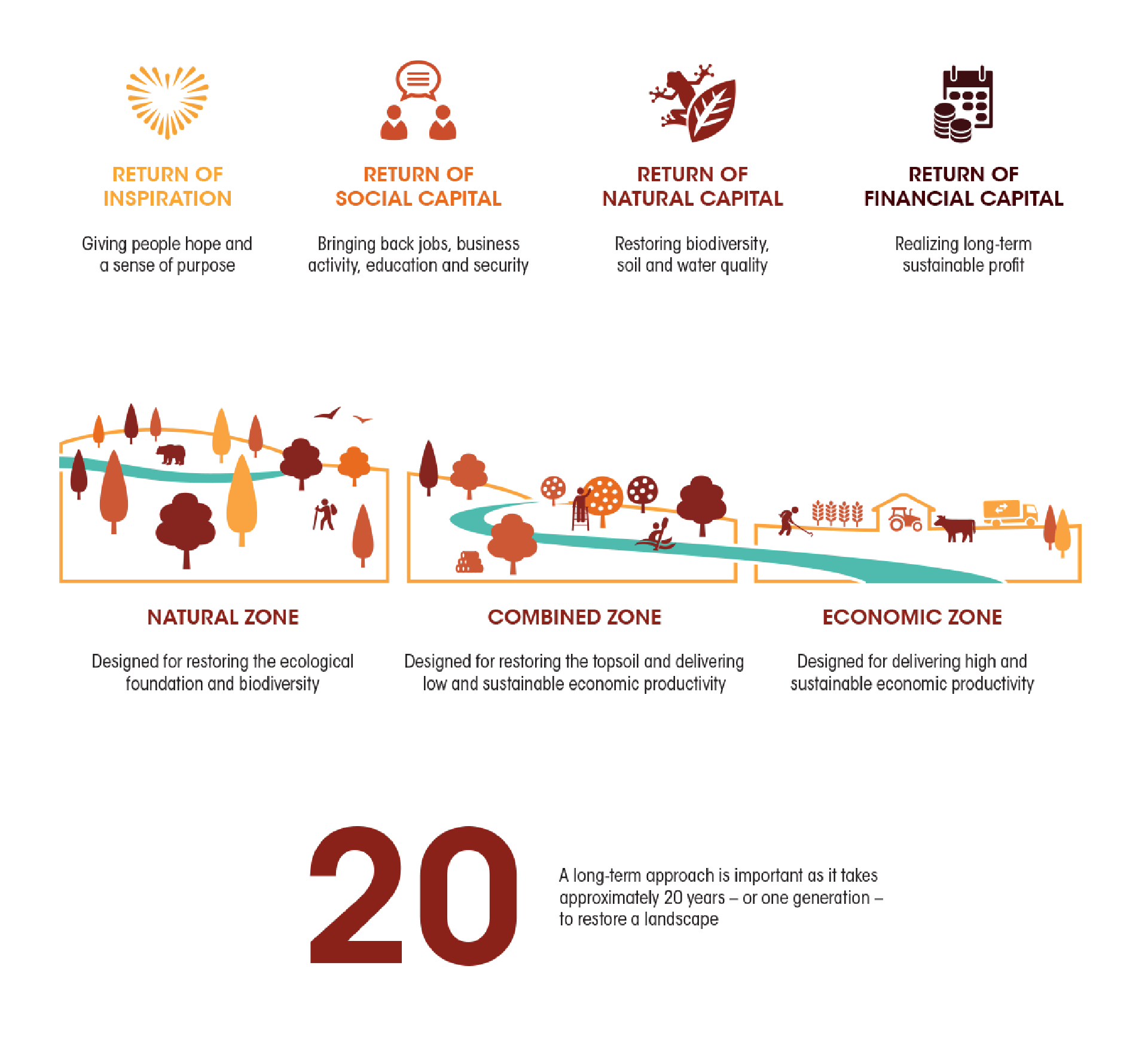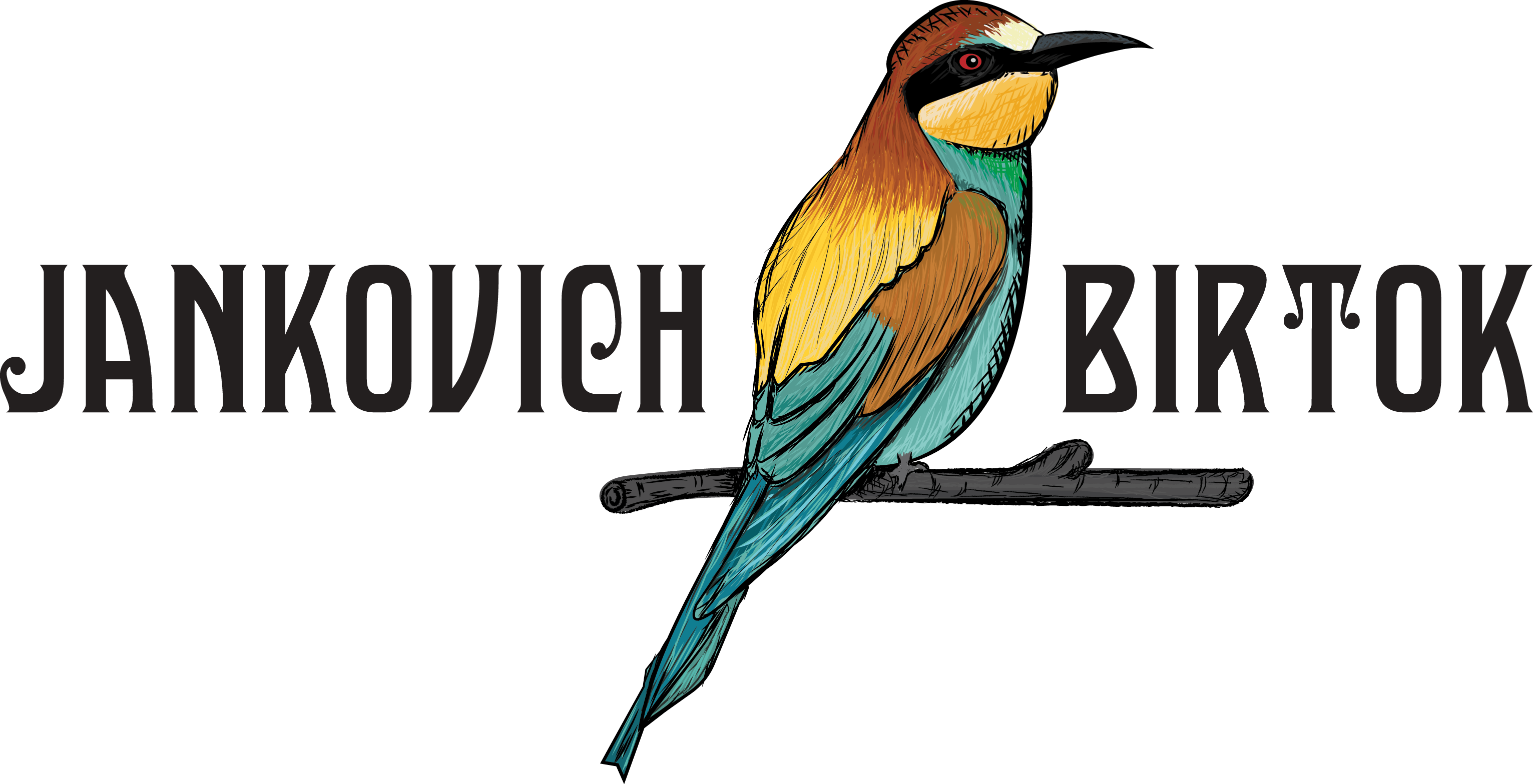We apply the 4 Returns holistic management framework developed by Commonland (www.commonland.com). 4 Returns is a science-based framework that is proven in practice. Developed in close collaboration with leading scientific institutes, business schools, farmers and experts, 4 Returns transforms and regenerates ecosystems by focusing on 4 key returns over the course of a single generation, or 20 years.

The 4 Returns framework mapped out for the Jankovich Birtok, a road map
Return of Inspiration
Stakeholder
Participation
- Local stakeholders are engaged in work,and inspired by vision to replicate / join the good work
- Activities are embedded in wider landscape
- Stakeholders from community involved in or informed ofdecision-making
- Community members have hope for future of the region; (educated) people stay in the region
Strong
Leadership
- Lead by example, walk the talk
- Organise decision-making at the lowest level possible
- Create collective leadership among employees / stakeholders, and engaged in an inspiring joint vision for the future
- Take action to prevent corruption and other phenomena detrimental to the business
- Network of professionals and strategic partnerships for innovation
Culture
and Identity
- Community members feel sense of belonging and pride of their identity
- Hosting, organising or sponsoring cultural events
- Local culture and identity interwoven in working culture, integrating regional identity in own branding
- Supporting monuments and historic sites
Meaningful
Employment
- Number of jobs created directly and indirectly
- Sense of purpose, belonging, ownership and responsibility among employees
- Good working atmosphere
- Good job conditions (salaries, other social benefits)
- Representative and balanced workforce (gender, ethnicity, etc.)
Resilient
Community
- Improved (social) security, less theft, more savings, more resilient community
- Improved health of employees and community members
- Improved infrastructure (roads, water, energy, telecommunications)
- Peace based on mutual understanding between farmers, nature conservation & citizens / consumers
Capacity Building
& Innovation
- Improved education and (environmental) awareness, e.g. through partnerships with schools
- Employees’ and community members’ professional skills are developed and improved
- Entrepreneurship is stimulated among employees and community members
- R&D investments – test ground for innovation
Natural Return
Sustainable
Water Management
- Improve water infiltration capacity of the land
- Reduce surface runoff
- Reduce erosion
- Minimise net water use
- De-canalise waterways
- Restore natural (river) banks
Biodiversity
Conservation & Restoration
- Applying 3 zones to farm management plan
- Applying agro-ecological principles
- Stopping the use of chemical herbicides, pesticides and other toxic substances
- Control invasive species and stimulate native animals
- Restore natural vegetation & habitat
- Animal welfare
Regenerative
Soil Management
- Minimising soil disturbance (e.g. reduced tillage)
- Cover crops, rotations or otherwise ensuring continuous vegetation cover
- Management
- Stimulating soil life and increasing soil organic matter / carbon
- Sustainable (rotational) grazing
- Reducing the use of chemical fertilisers and toxic substances
Financial Return
Sustainable
Profit
- Long-term business planning
- Balancing people, planet and profit in business model
- Measures to increase resilience of the business for economic or environmental shocks
- Making use of available subsidies and incentives for sustainability and green growth
- Community co-invested and sharing benefits
More (diverse)
Added Value
- New products and/or business models
- Vertically integrating the value chain (processing, direct marketing, etc.)
- Developing / improving brand identity and marketing of products
- Other (spin-off) businesses are sparked and contribute to local economy
Circular
Economy
- Reduce the use of (artificial) inputs across the business (e.g. improved efficiency or changing processes altogether)
- Re-use waste streams that cannot be reduced (e.g. waste water, heat)
- Recycle the waste streams that cannot be re- used (e.g. bio-energy, fertiliser or bio-plastics)


Social Return